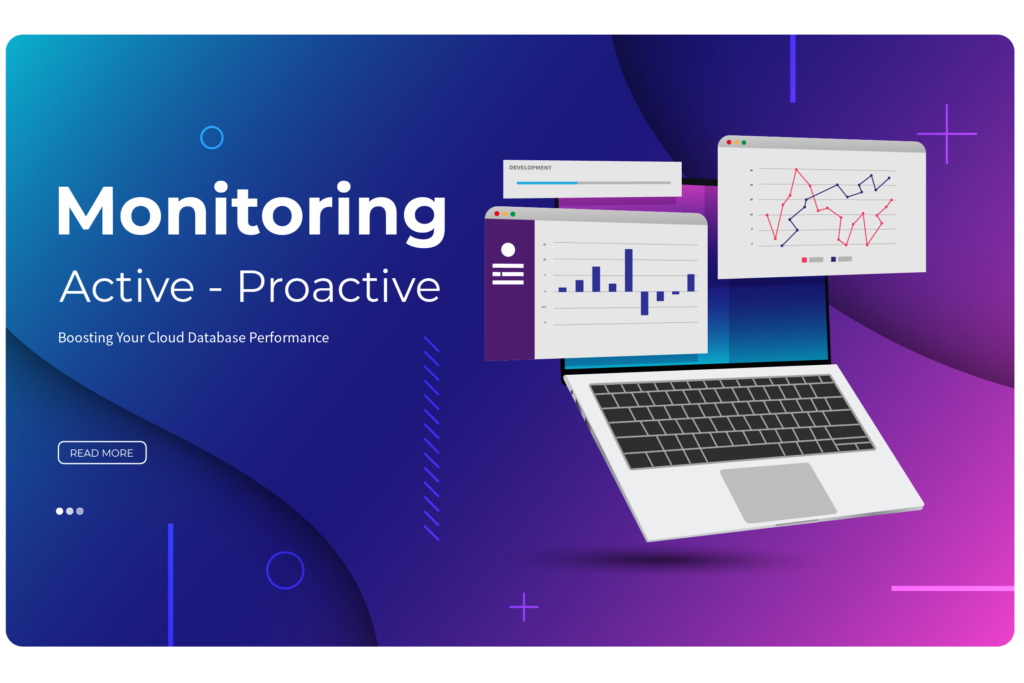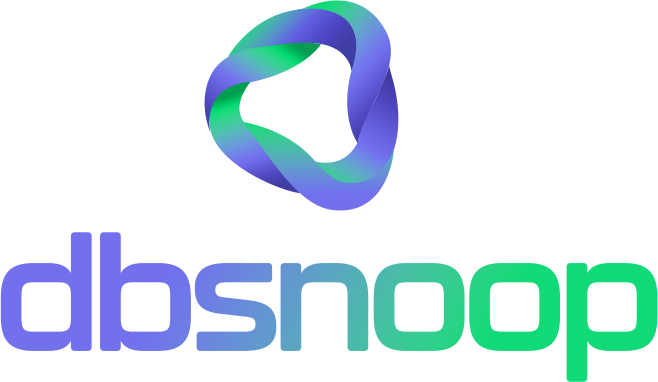

You, DBA, DevOps, SRE, DBE, Tech Lead, or Developer, have you ever found yourself putting out fires in the middle of the night because the system crashed, the client complained about slowness, or worse, because a security breach was exploited? This is the reality of reactive monitoring: acting only when the problem is already established. In a scenario where cloud and automation should bring agility and stability, the truth is that many companies still operate under the constant stress of unexpected database failures.
But what if there was a way to predict these disasters, to identify bottlenecks before they affect your application’s critical performance, and to ensure the security of your data in advance? Get ready to discover how the transition from reactive to proactive monitoring can not only save your late nights but also directly impact your company’s bottom line.
The Hidden Cost of Reactive Monitoring: Why Firefighting Is Not a Sustainable Strategy
Reactive database monitoring is like driving while only looking in the rearview mirror. You only see the problem after it has already happened. In cloud database environments, where complexity and scale are enormous, this translates into significant challenges and high costs.
Every minute the system is down can mean thousands, or even millions, in revenue losses, especially for e-commerce companies or critical services. Furthermore, there is the incalculable damage to brand reputation, something difficult to rebuild and that affects your customers’ trust in the long term.
Your team of DBAs, DevOps, and SREs spends precious hours investigating and fixing failures, instead of focusing on innovation, optimization, and developing new functionalities. This is an indirect cost, but one that directly impacts your company’s ability to evolve and remain competitive in today’s market.
Key Impacts of Reactive Monitoring:
- Expensive Downtime: Direct financial losses and damage to brand reputation.
- Loss of Team Productivity: Time spent on fixing failures instead of innovation.
- Impaired Customer Experience: Dissatisfied users who may migrate to competitors.
- Elevated Security Risks: Late discovery of intrusions or data breaches, with catastrophic consequences.
- Impact on SLA (Service Level Agreement): Non-compliance with agreements, leading to fines and dissatisfaction.
Users do not tolerate slowness or interruptions. A bad experience can lead to the abandonment of your service or product and migration to competitors, undermining the customer base you built with so much effort and investment. Customer satisfaction is, after all, a fundamental pillar for success.
Acting reactively regarding security means you only discover an intrusion or data breach after it has already occurred. The legal, financial, and reputational consequences are often catastrophic and difficult to recover from, jeopardizing the very existence of the business.
The Proactive Revolution: The Power of Observability and Automation
The key to breaking free from the vicious cycle of reactive monitoring is to adopt a proactive stance, based on observability and automation. This means not only knowing what happened but predicting what will happen, ensuring your team is always one step ahead of problems and business demands.
A. Observability Beyond Traditional Monitoring
Observability is the ability to understand the internal state of a system through its external data. In a database context, this involves going beyond basic metrics, diving deep into the operation to gain valuable and actionable insights.
It’s not enough to know that the CPU is high; you need to identify which specific SQL is causing the usage spike. Deep database observability allows you to trace the execution of each query, understand its execution plan, and identify inefficiencies in real-time, providing actionable insights that lead to precise optimizations.
Proactive systems learn from historical behavior. They identify normal usage patterns and alert about anomalies that may indicate an imminent problem, such as a gradual increase in read latency or an unusual volume of errors, allowing intervention before the failure fully manifests.
In complex cloud environments, a database problem can be a symptom of a failure in another service. Observability correlates logs, metrics, and traces to map the journey of a request and pinpoint the root cause, greatly facilitating troubleshooting and reducing resolution time.

B. Automation for Prevention and Rapid Response
Automation is the right arm of proactivity, especially for DevOps and SRE teams, transforming monitoring into a preventive and efficient force. It allows teams to respond to events more quickly and consistently, minimizing the impact of any anomaly.
Instead of being bombarded with generic alarms, a proactive system sends context-rich alerts, indicating not only what is wrong but also where and why. This allows your team to direct their efforts with precision, without wasting time on unnecessary investigations and focusing on the solution.
Some solutions can go further, suggesting or even automatically implementing basic optimizations, such as creating indexes for slow queries, under supervision. This accelerates resolution and continuously improves database performance, without the need for constant manual intervention.
For known and repetitive problems, automation can trigger predefined runbooks to restart services, scale instances, or apply patches. This drastically reduces response time and minimizes the impact of incidents, often resolving the issue even before a human needs to intervene.
dbsnOOp: Your Ally in Database Monitoring Transformation
This is where dbsnOOp stands out as the ideal solution for DBA, DevOps, SRE, DBE, Tech Leads, and DEV teams looking to transcend reactive monitoring. dbsnOOp was built with proactivity in its DNA, offering a robust set of functionalities that simplify database management and observability.
With dbsnOOp, you can:
- Proactive SQL Bottleneck Identification: Continuously monitor your queries, identifying those that are becoming slow or inefficient before they impact the application. It doesn’t wait for failure; it prevents it, saving your team headaches and ensuring smooth operations.
- End-to-End Observability for the Cloud: Gain a holistic view of your entire cloud database environment. Monitor performance metrics, resource consumption, security events, and logs in real-time, correlating data for quick and accurate troubleshooting, all in a single dashboard.
- Automation in Data Management: Automate the collection and analysis of performance data, alerting your team to deviations and suggesting optimizations. This frees up your engineers for more strategic and less repetitive tasks, focusing on innovation and development.
- Enhanced Security and Compliance: Go beyond basic monitoring. With dbsnOOp, you monitor database access, activities, and configurations, identifying anomalous behaviors that may indicate security threats and ensuring data management in compliance with internal policies and industry regulations.
dbsnOOp not only alerts you about the problem; it provides the context and information necessary for your DevOps and SRE team to act preventively, avoiding crises and optimizing database performance continuously and efficiently. It is the ideal partnership for the stability and growth of your business.

The Real Impact on Your Company’s Bottom Line: Fewer Headaches, More Profit
Adopting proactive database monitoring with dbsnOOp means more than just a stable system. It means a positive financial and strategic impact that will reverberate throughout your organization, from operational efficiency to customer satisfaction.
The drastic cost reduction is immediate. Less downtime, fewer hours of reactive troubleshooting, and continuous optimization of cloud resources translate into substantial operational cost savings, freeing up capital for investments in other growth areas, beyond database infrastructure.
Your team will enjoy a significant increase in productivity and innovation. Free from the constant pressure of putting out fires, your team can dedicate their time and expertise to developing new functionalities, optimizing architectures, and driving innovation, generating real value for the business and keeping it ahead of the competition.
A significant improvement in customer experience is a direct consequence. A fast, stable, and secure system retains customers, increases satisfaction, and drives your business growth through recommendations and retention, building a loyal user base.
Finally, strengthening security and compliance is crucial. Protect your data and your reputation, avoiding breaches and non-compliance fines, through robust security observability that ensures the integrity of your operations and the trust of your stakeholders.
Prepare for a Future Without Database Crises
The choice between reactive and proactive monitoring is not just a technical decision; it is a strategic decision that defines the resilience, efficiency, and success of your business in the long term. With dbsnOOp, you transform the way your company interacts with its cloud databases, moving from a state of incident response to a culture of prevention and continuous optimization.
Want to solve this challenge intelligently and ensure high performance for your database? Schedule a meeting with our specialist or watch a practical demonstration!
Schedule a demo here.
Learn more about dbsnOOp!
Learn about database monitoring with advanced tools here.
Visit our YouTube channel to learn about the platform and watch tutorials.


